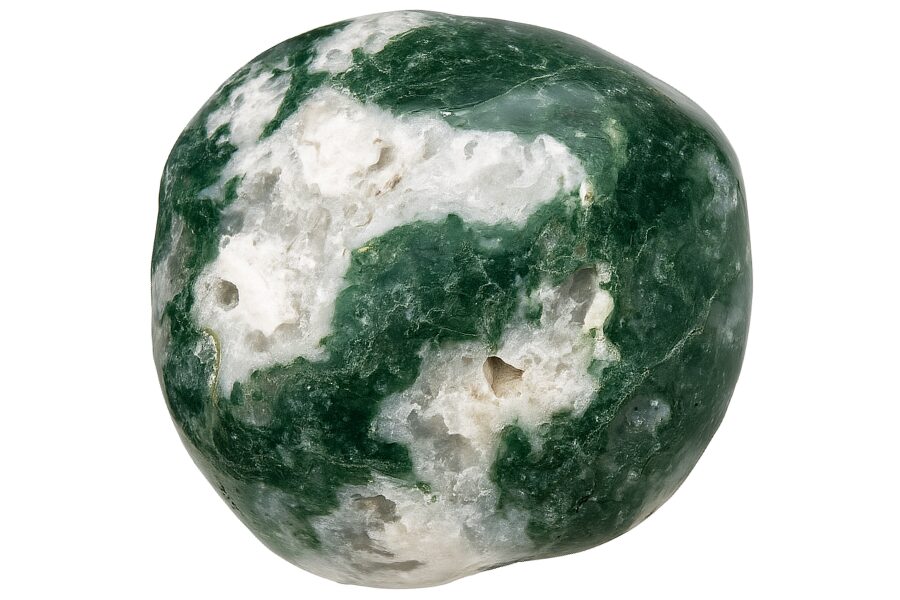You might be surprised how often agates in Pennsylvania turn up in places that don’t look special at all. A stream bank, a gravel road, or a freshly plowed field can hide stones that glow once you know how to spot them.
It’s easy to overlook them at first, but the more time you spend out there, the sharper your eyes get. After a while, you start to see the difference between an ordinary pebble and something worth picking up.
Rain helps, sunlight helps even more, and patience helps most of all. The best part is that every new place you explore teaches you a little more about where these stones like to hide.
Knowing where to start makes all the difference. You’ll come home with more than just dusty boots! Maybe you’ll end up starting an agate collection that keeps you chasing the next find.
What is Pennsylvania Agate?
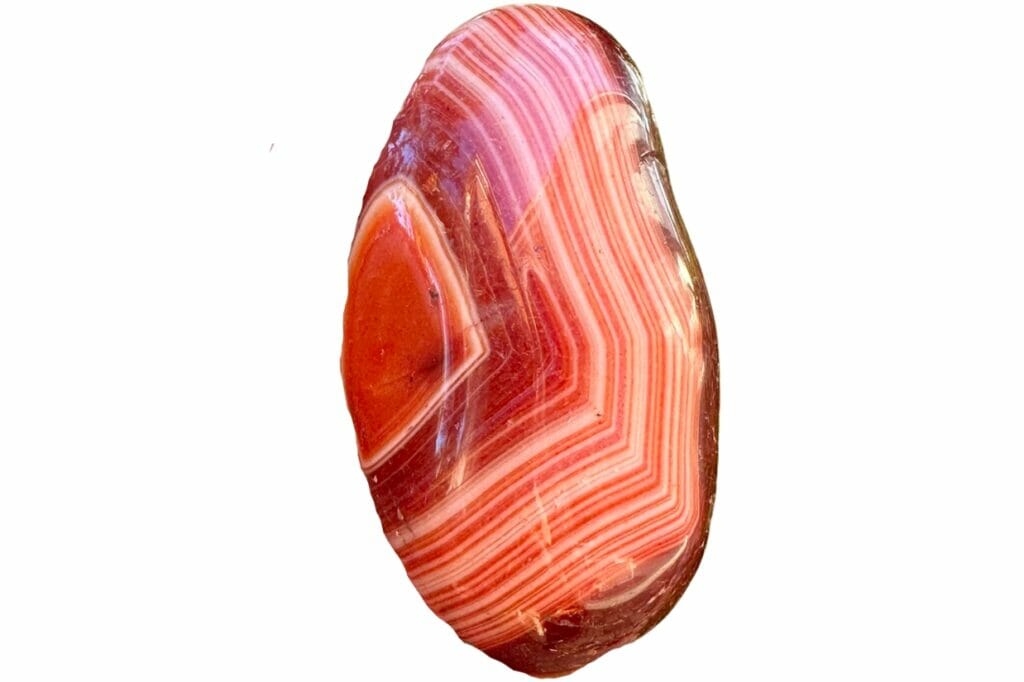
Agate is a type of quartz, and if you’ve ever seen one, you’ll know they’re not your everyday stone. They have beautiful bands and swirls of different colors, which makes them look like mini pieces of art.
People around the world love agates. Because they’re so pretty, folks often turn them into jewelry or use them for decoration. Agate’s value and price in the market reflect this craving for its beauty.
These gems usually form in volcanic rock or places where there has been a lot of water over time, like old riverbeds or lakes. Some famous spots where they’re found around the world include Mexico, Brazil, and Australia.
But you don’t need to go far to uncover this gem— you can even find agate right here in Pennsylvania! Before we go into the legit locations that you can explore, let’s first discuss the different types of agates:
Blue Lace Agate
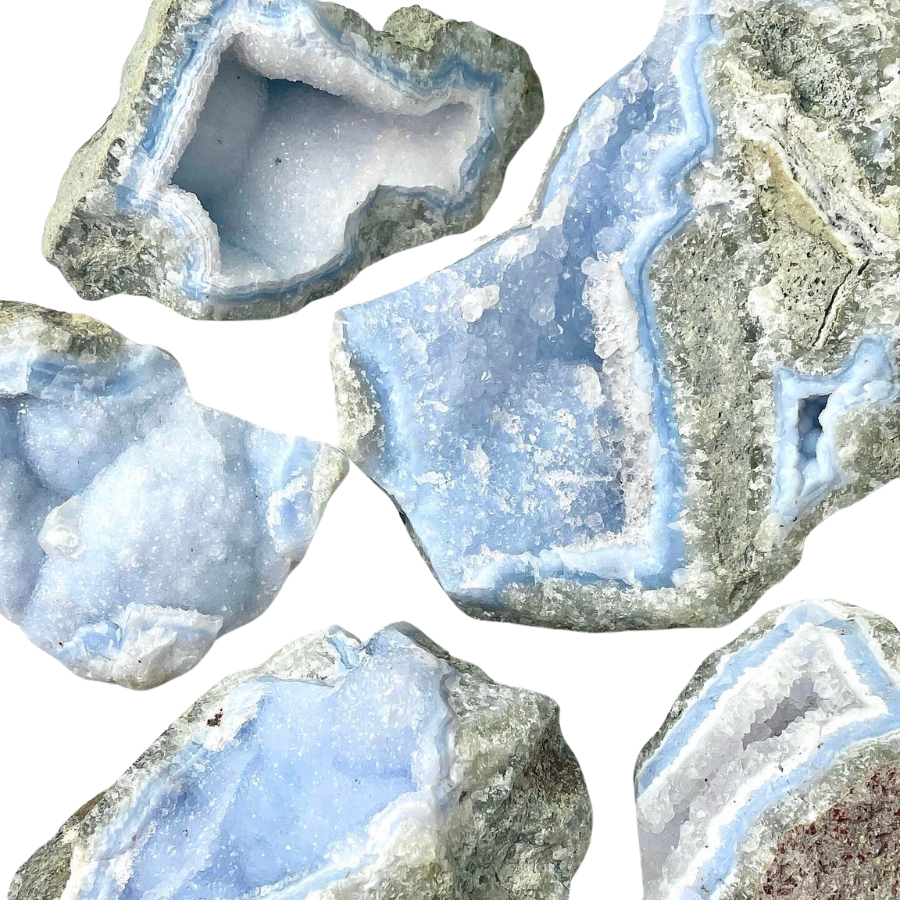
Blue lace agate is like the soft, sky-blue waves with lines that swirl and twist like delicate lace.
Its pattern comes from slow-forming layers of quartz, which create those beautiful, lace-like bands.
The bands of this agate type are often in shades of light blue, white, and sometimes a bit of grey. It’s different from other agates, which usually have more intense colors and stronger patterns.
The value of blue lace agate lies in its soft, tranquil look and the feeling of calm it brings. It’s often used in jewelry or as a decorative stone.
If you want REAL results finding incredible rocks and minerals you need one of these 👇👇👇
Finding the coolest rocks in isn’t luck, it's knowing what to look for. Thousands of your fellow rock hunters are already carrying Rock Chasing field guides. Maybe it's time you joined the community.
Lightweight, mud-proof, and packed with clear photos, it’s become the go-to tool for anyone interested discovering what’s hidden under our red dirt and what they've already found.
Join them, and make your next rockhounding trip actually pay off.
What makes it different:
- 📍 Find and identify 140 incredible crystals, rocks, gemstones, minerals, and geodes across the USA
- 🚙 Field-tested across America's rivers, ranchlands, mountains, and roadcuts
- 📘 Heavy duty laminated pages resist dust, sweat, and water
- 🧠 Zero fluff — just clear visuals and straight-to-the-point info
- ⭐ Rated 4.8★ by real collectors who actually use it in the field
Moss Agate

Instead of having the typical banding for which the different types of agates are known, moss agate has green inclusions that look like moss or trees.
These green patterns aren’t real plant material, though. They’re minerals like chlorite or iron oxide.
In some cultures, this type of agate is known as the “gardener’s stone” because of its green, plant-like appearance. It’s believed to help plants grow.
The price of moss agate can vary. It’s often quite affordable, but the more distinct and picturesque the green patterns, the more it might cost.
Fire Agate
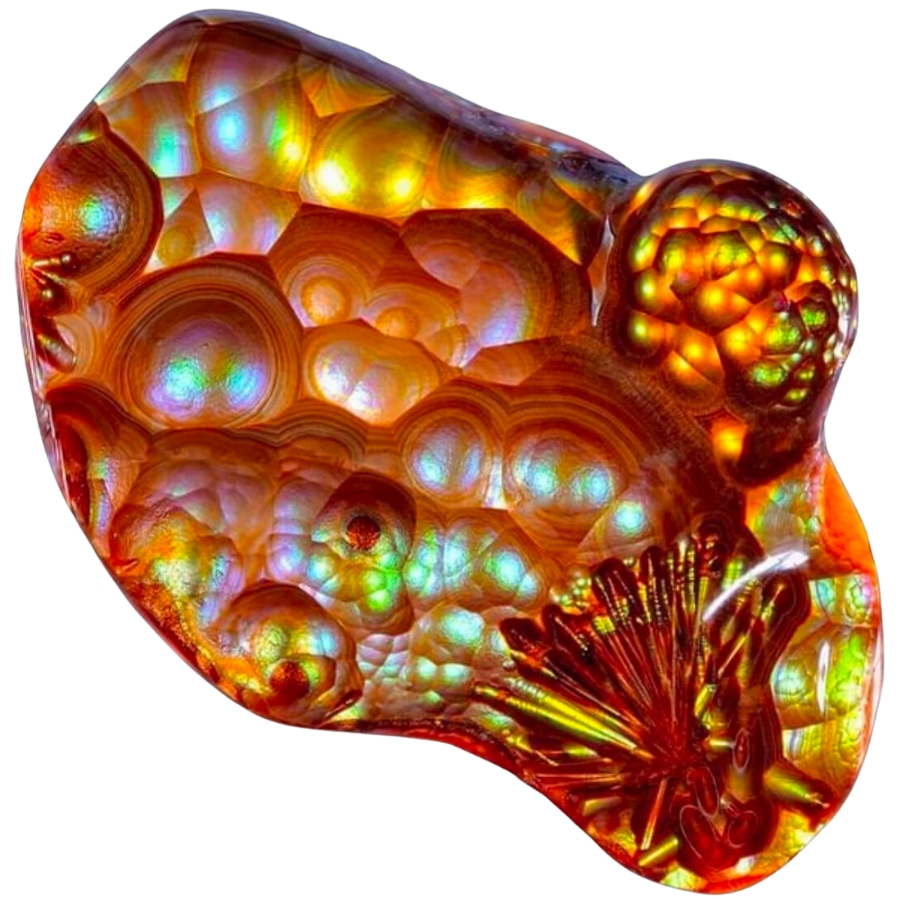
Fire agate is known for its incredible colors and the way it sparkles like fire. It’s got layers of silica and iron oxide that reflect light, creating a fiery effect.
When you look at fire agate, it’s like seeing flames trapped inside. Its colors can range from reds and oranges to greens and golds, all shimmering under the surface.
You might be wondering, “What is fire agate worth?” Well, its value comes from its rare beauty. The more color and sparkle, the more valuable the stone is.
Its fiery iridescence and lively play of color are used in jewelry pieces that are meant to stand out.
Dendritic Agate
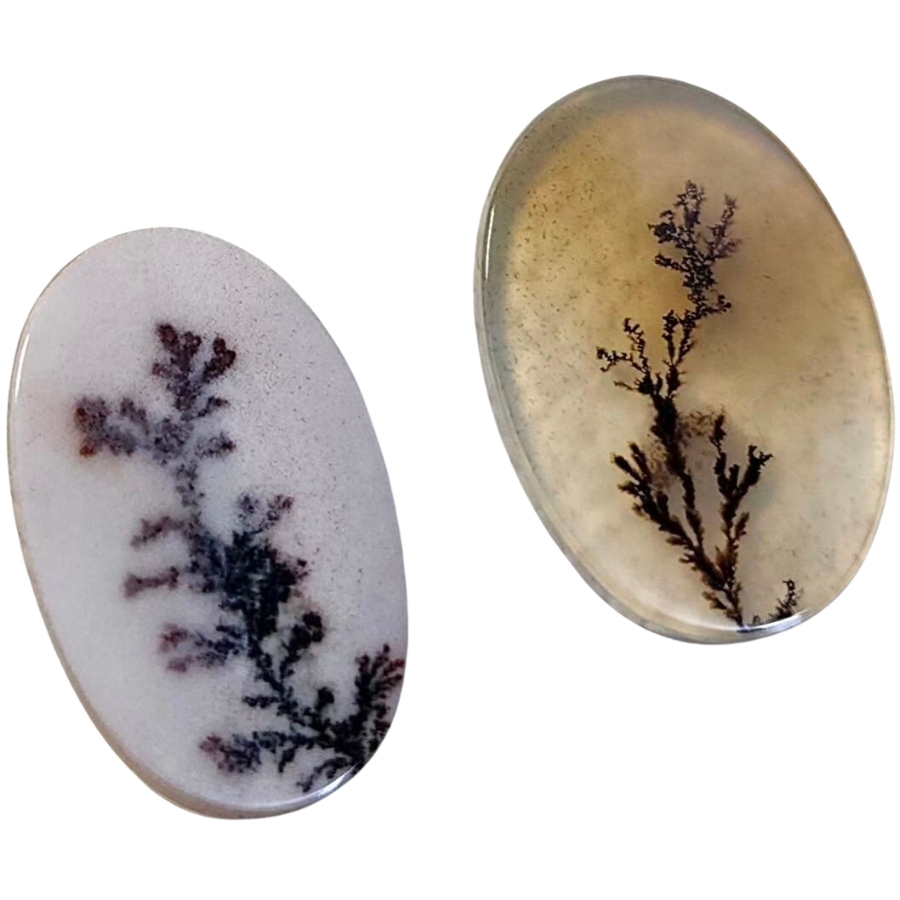
Dendritic agate is known for patterns that look like tiny trees or shrubs. Like moss agate, these patterns aren’t actual plants. They’re made of minerals, mostly manganese or iron oxides.
When you look at a dendritic agate, it’s like peering into a miniature forest or a frosty winter landscape.
The base of the stone is usually translucent to opaque, and the “dendrites”— those tree-like patterns— are often black or brown.
When it comes to how much dendritic agate is worth, it can vary. The more detailed and distinct the patterns are, the more it’s usually valued.
In some cultures, dendritic agate is believed to bring fullness and richness to life.
Crazy Lace Agate
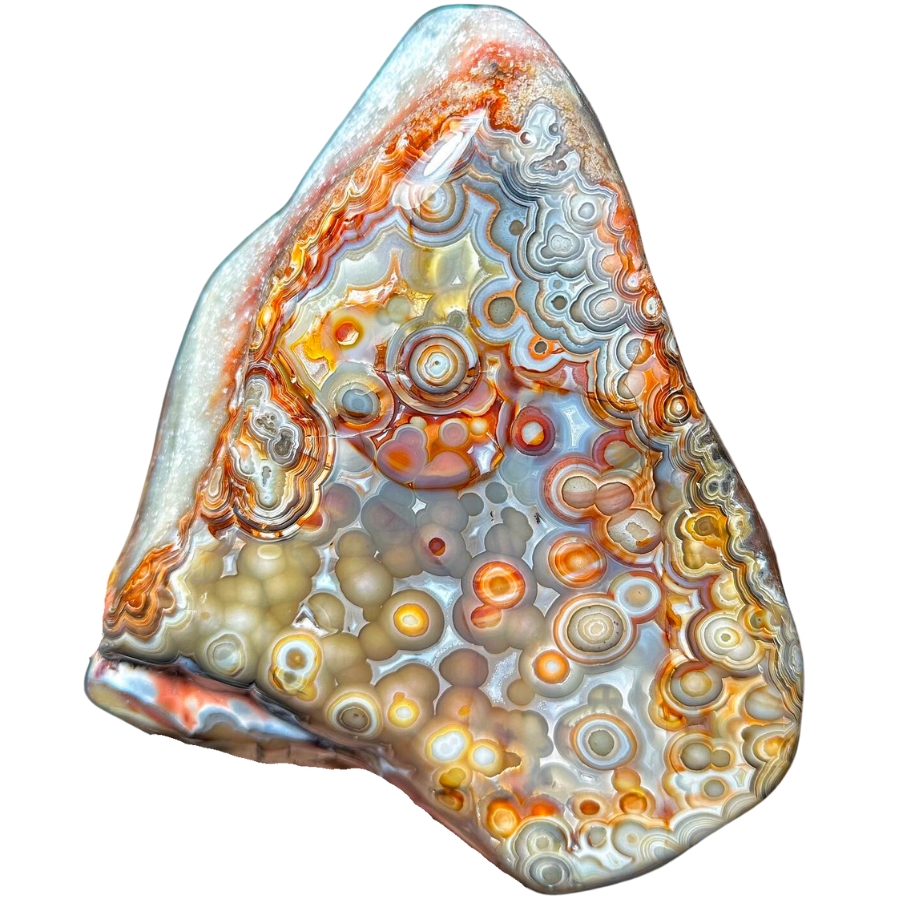
Crazy lace agate is like a party in a rock! It’s got swirls, circles, and all sorts of wild patterns dancing across it.
Its colors can be a mix of red, orange, yellow, and brown, and sometimes even a bit of gray or white.
What makes crazy lace agate stand out is its vibrant and complex patterns. No two pieces are the same. This distinctiveness is a big reason why it’s so valued.
Despite its wild and ‘crazy’ appearance, it’s sometimes called the “Laughter Stone” or “Happy Lace” because of the joy and positive vibes it’s believed to bring.
Laguna Agate
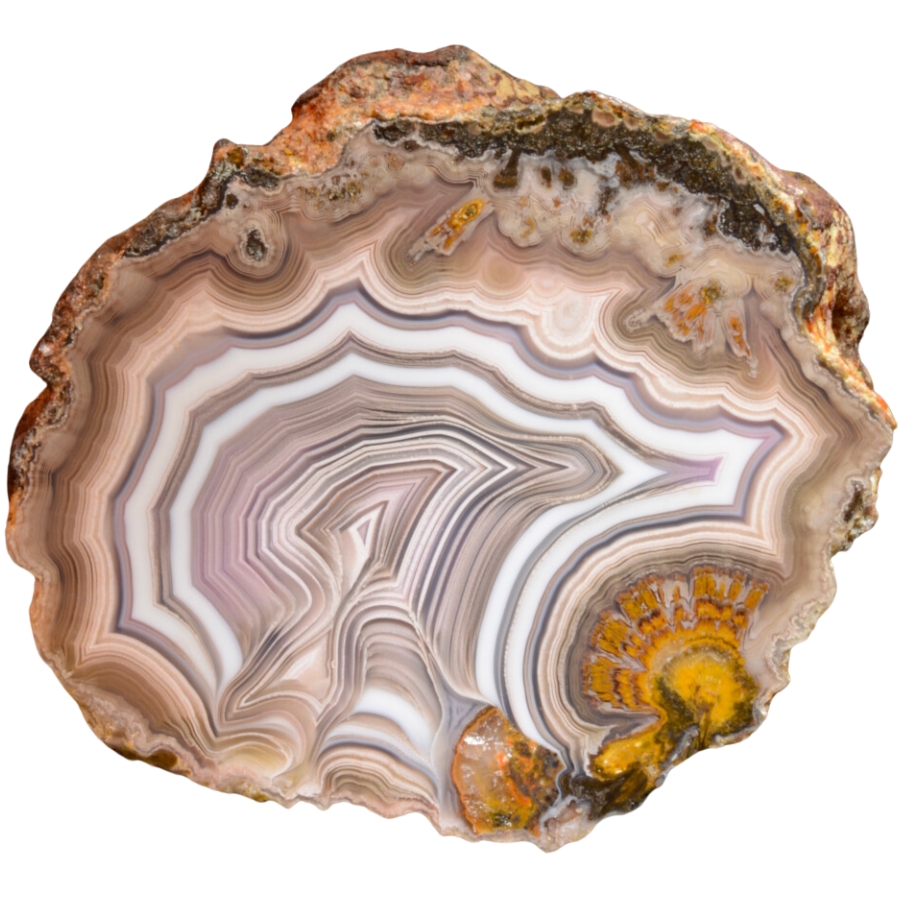
Laguna agate has incredibly sharp and fine banding. It has layers of red, orange, pink, yellow, and sometimes even purple and white all stacked in neat, tight bands.
These bands can form eye-catching patterns, like swirls, loops, and even landscapes.
The different colors of its bands come from various minerals present in the water at the time of its formation.
Laguna agate is considered one of the finest agates in the world due to its exceptional banding. This high regard among agate varieties makes it a prized possession for collectors.
Condor Agate
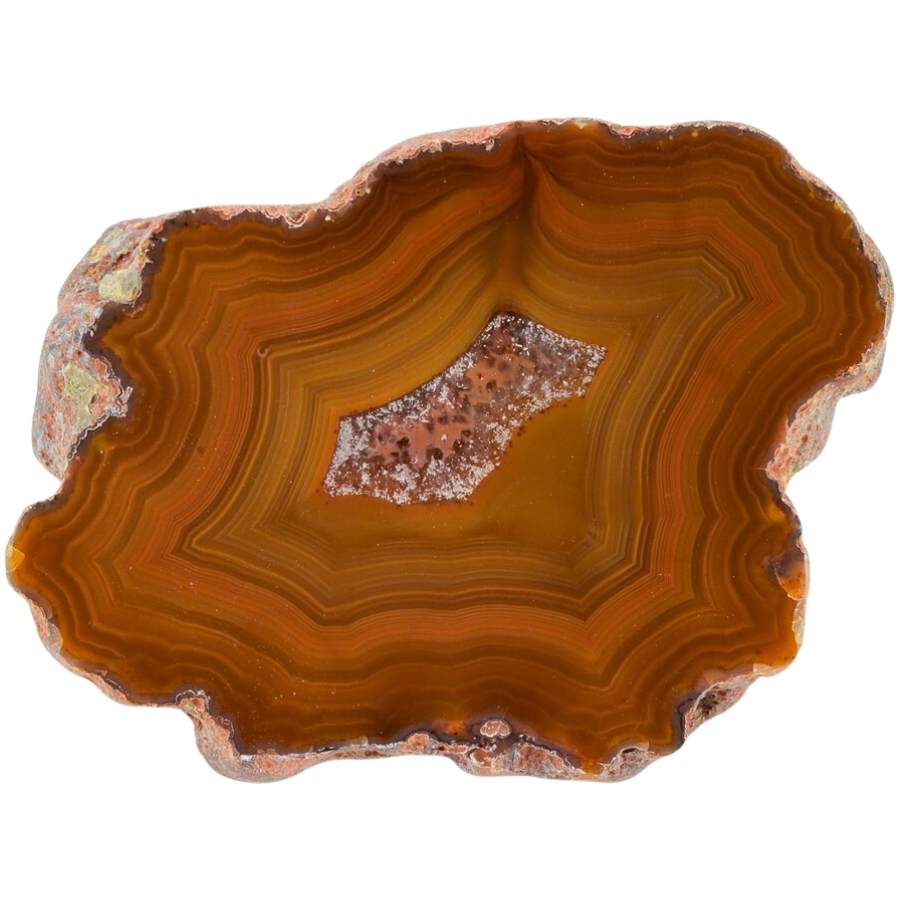
Condor agate is a real standout. It’s known for its bright, vivid colors and complex patterns.
It has reds, oranges, yellows, and sometimes even blues and greens all swirling together. These colors form in bands or in more random, artistic patterns.
The intensity and variety of its colors is what makes condor agate so special. It’s often used by artists and craftsmen who want to make a statement with their work.
Condor agate’s bold colors and patterns can turn a simple piece of jewelry or art into something really eye-catching.
Fortification Agate (Banded Agate)
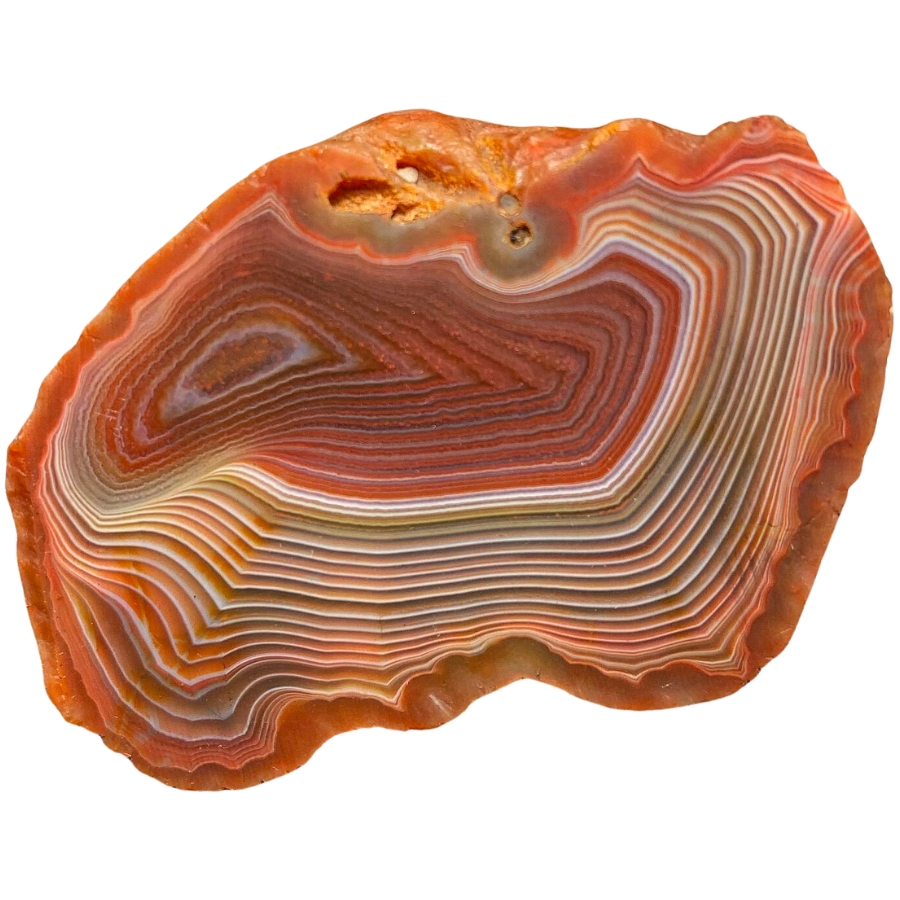
Fortification agate gets its name because the patterns inside it look like the aerial view of a fortified city.
Imagine seeing bands of color forming shapes that look like walls, with sharp angles and curves. They are usually in different colors, making each layer stand out.
If fortification agate is valuable, it’s because of its distinct patterns and colors. Its unique look makes it sought after for jewelry and as a collector’s item.
The clearer and more defined the patterns, the more valuable the stone can be. Some people also believe it can help with relaxation and calmness.
Iris Agate
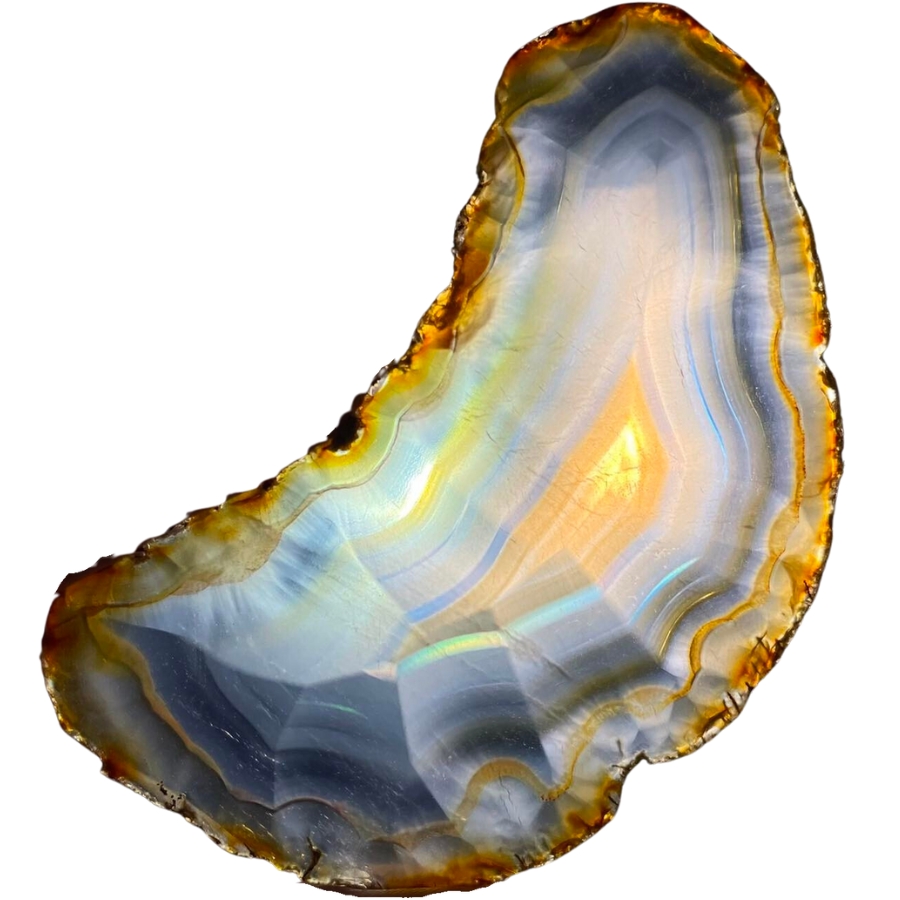
Iris agate looks like a regular agate at first, but when you hold it up to the light, something amazing happens. It shows all these rainbow colors, like light passing through a prism.
This is because it has very thin layers of silica, and when light hits these layers, it splits into all the colors of the rainbow.
The formation of iris agate is similar to other agates, but its layers are super thin, which is what creates the rainbow effect.
The value of iris agate comes from its unique ability to show these colors. In the past, people even used to think it had magical properties because of the way it showed colors. They saw it as a stone of good luck and wonder.
Plume Agate

Plume agate gets its name from its patterns that look like soft, feathery plumes. These plumes can be in all sorts of colors: red, black, green, or yellow, set against a translucent or opaque background.
The way these plumes seem to float in the stone makes it look like a frozen underwater scene or like feathers caught in a breeze.
The plumes are made of minerals like manganese or iron oxide, which get trapped in the silica during the agate’s formation and create the feathery patterns.
The price of plume agate can vary depending on how clear and intricate the patterns are. The more detailed and colorful the plumes, the more the stone is usually worth.
Picture Agate (Scenic Agate)
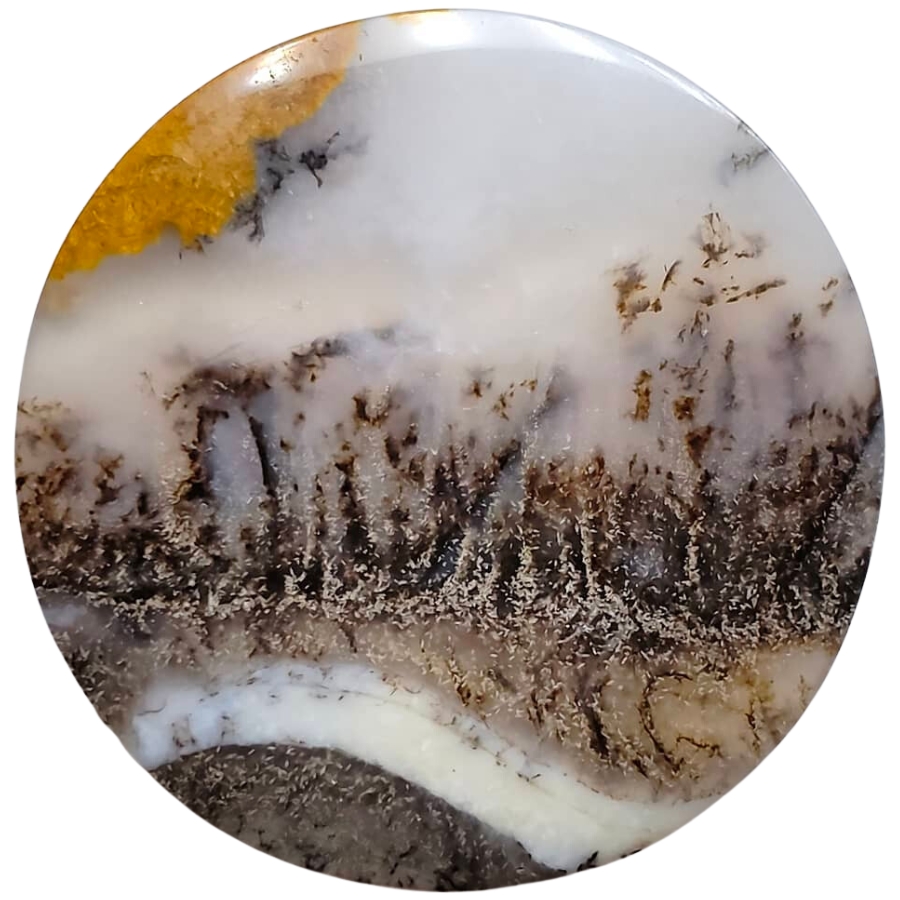
Picture agate is like a snapshot of nature captured in stone because it looks like it has pictures or scenes right inside it.
These “pictures” are actually natural patterns that resemble landscapes, mountains, trees, or even skies. They are usually in different shades of brown, white, and gray against a more translucent background.
The different patterns in picture agate or what’s also called scenic agate are made by various minerals in the water filled with silica that forms it.
If you’re thinking, “What is picture agate worth?“, its value comes from how distinct, clear, and detailed the natural “pictures” are.
Turritella Agate

Turritella agate is not your typical agate because it’s full of fossilized snail shells! The shells belong to a creature called Turritella, a type of sea snail.
These shells are tightly packed and create a pattern that looks like a bunch of tiny, swirling towers. The background of the agate is usually a dark, earthy color, which makes the white or cream-colored snail shells really pop.
Over millions of years, these snail shells got buried in sediment and eventually became fossilized. As time went on, silica-rich water flowed through the sediment, turning it into the agate we see today.
The value of turritella agate comes from its unique blend of geology and history. More than a pretty stone, it’s a piece of ancient life preserved in rock.
Fairburn Agate
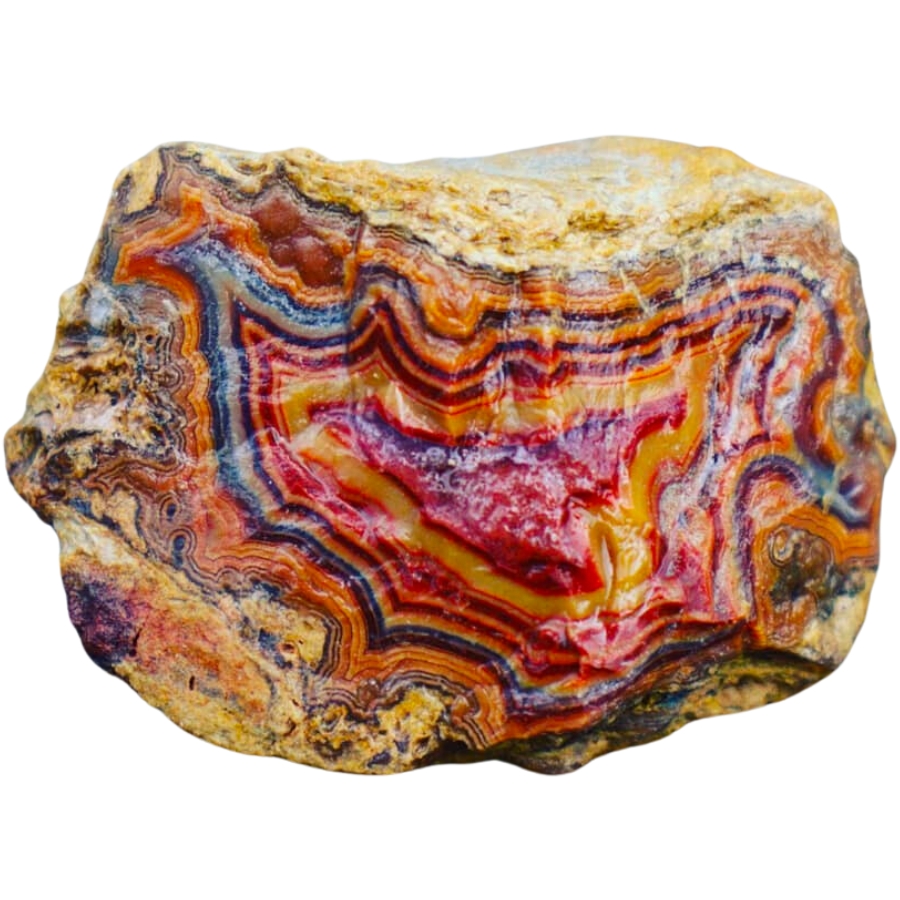
Known for its intricate patterns and bold colors, Fairburn agate is another fascinating type of agate. It usually has bands and swirls of different colors like red, yellow, orange, brown, and sometimes even pink or purple.
What’s special about these patterns is they often look like they’re in layers, creating a 3D effect. It’s like looking at a landscape made of stone.
It’s named after a place called Fairburn in South Dakota. This gives a clue about where it was first discovered.
People value Fairburn agate for the skill it takes to cut and polish it, which makes the patterns and colors really stand out.
Sagenite Agate
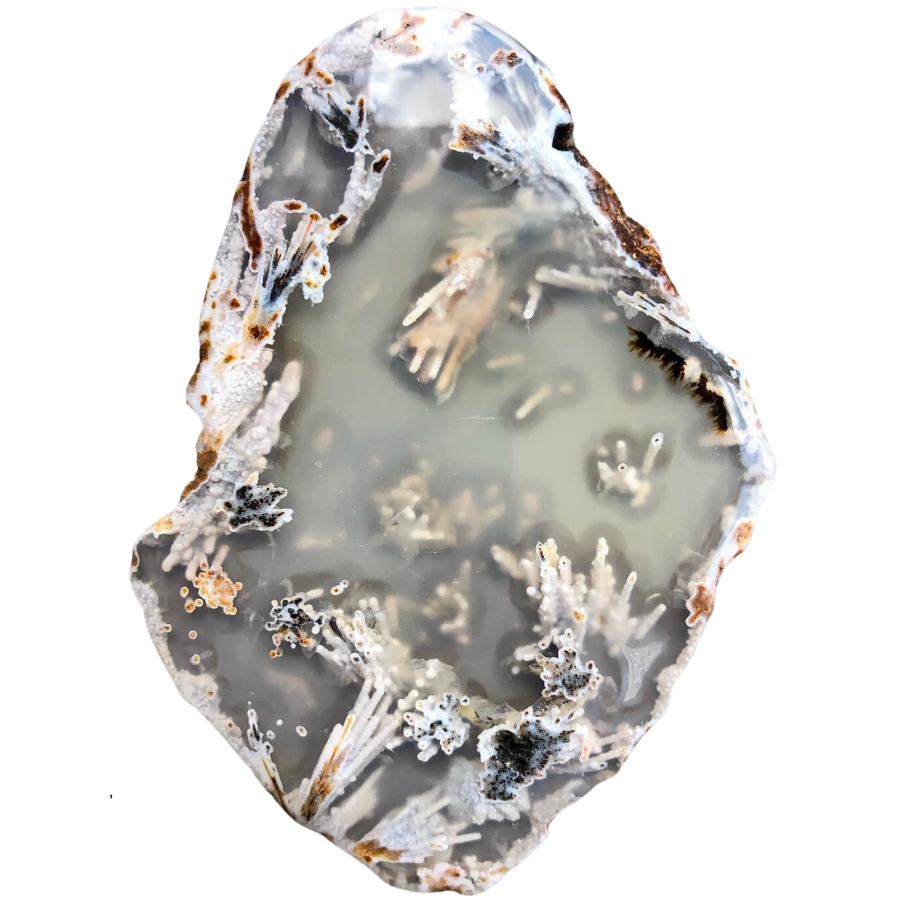
Sagenite agate has needle-like inclusions that look like tiny sprays of crystals inside it. They can be gold, silver, black, or even green, and they spread out in all directions, creating an amazing pattern.
The base of the agate is usually translucent, which lets you see these intricate needle patterns clearly.
These patterns are actually other minerals, like rutile or goethite, that get trapped inside the forming agate. These minerals grow in a crystal shape, looking like needles or hair.
Sagenite agate is often used in jewelry and other decorative items, with some people thinking that its needle patterns look like fireworks or starbursts.
Tree Agate
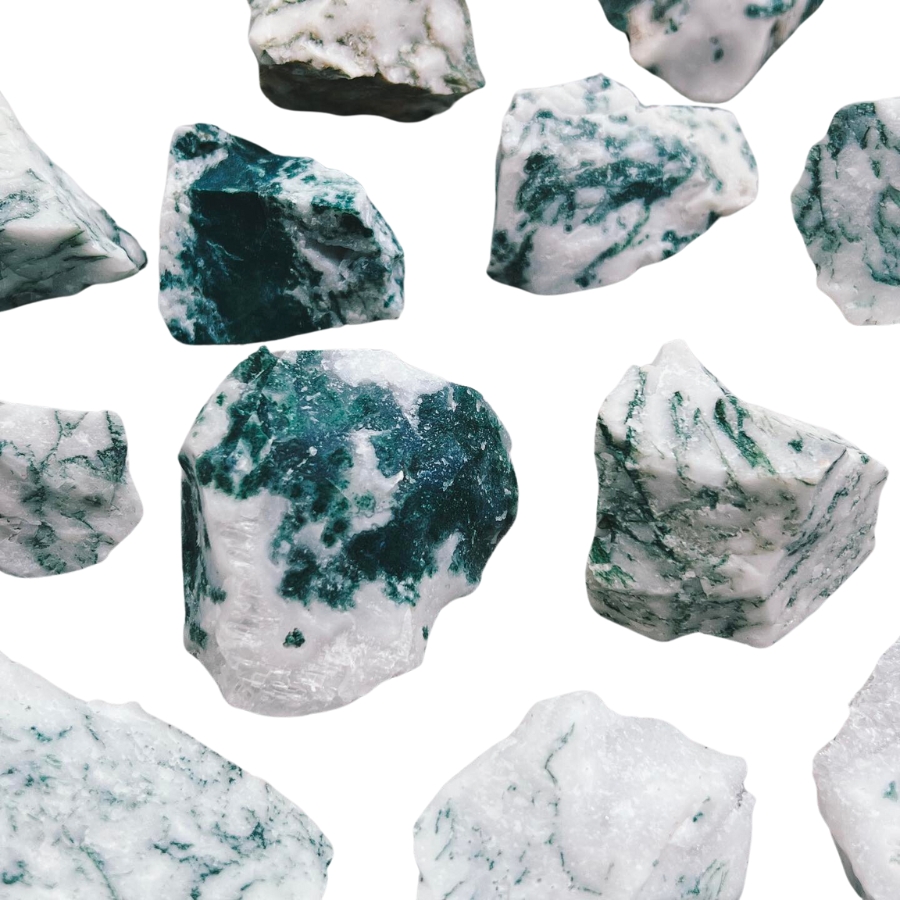
Tree agate, as its name suggests, looks like it’s got tiny trees or branches inside it. These tree-like patterns are usually green and spread out against a white or light gray background.
The green patterns aren’t actual trees, though. They’re made of minerals like chlorite or manganese.
Each piece of tree agate is different. You won’t find two that are exactly the same. It’s valued for its looks and it’s often used in jewelry and decorations.
The key factors in our recommendations are:
- The deep experience and understanding of our team about the area
- Recommendations from local groups and clubs
- How easy it is to get the a particular location
- Safety and potential hazards when collecting
- Weighing private and public locations
- The ability for both experienced and novice agate enthusiasts to find great samples
With these factors in mind we’ve been able to put together a fantastic list that just about anyone can use!
Kids. Beginners. Pros. Doesn’t matter. This book has become the go-to because it works for everyone.
Magy put it bluntly: “Identify rocks, crystals and minerals is so easy now!”
That’s not by accident, the photos are crisp, the callouts are simple, and the design is rugged enough to throw in a backpack without worrying. Whether it’s your first geode or your hundredth, this guide keeps the fun part simple: finding more treasures.
The Best Spots To Find Agates in Pennsylvania
There are plenty of great gem mine sites in Pennsylvania, but if you want to focus on those that bear agates, below are our top recommendations:
Always Confirm Access and Collection Rules!
Before heading out to any of the locations on our list you need to confirm access requirements and collection rules for both public and private locations directly with the location. We haven’t personally verified every location and the access requirements and collection rules often change without notice.
Many of the locations we mention will not allow collecting but are still great places for those who love to find beautiful rocks and minerals in the wild without keeping them. We also can’t guarantee you will find anything in these locations since they are constantly changing.
Always get updated information directly from the source ahead of time to ensure responsible rockhounding. If you want even more current options it’s always a good idea to contact local rock and mineral clubs and groups
Caledonia State Park
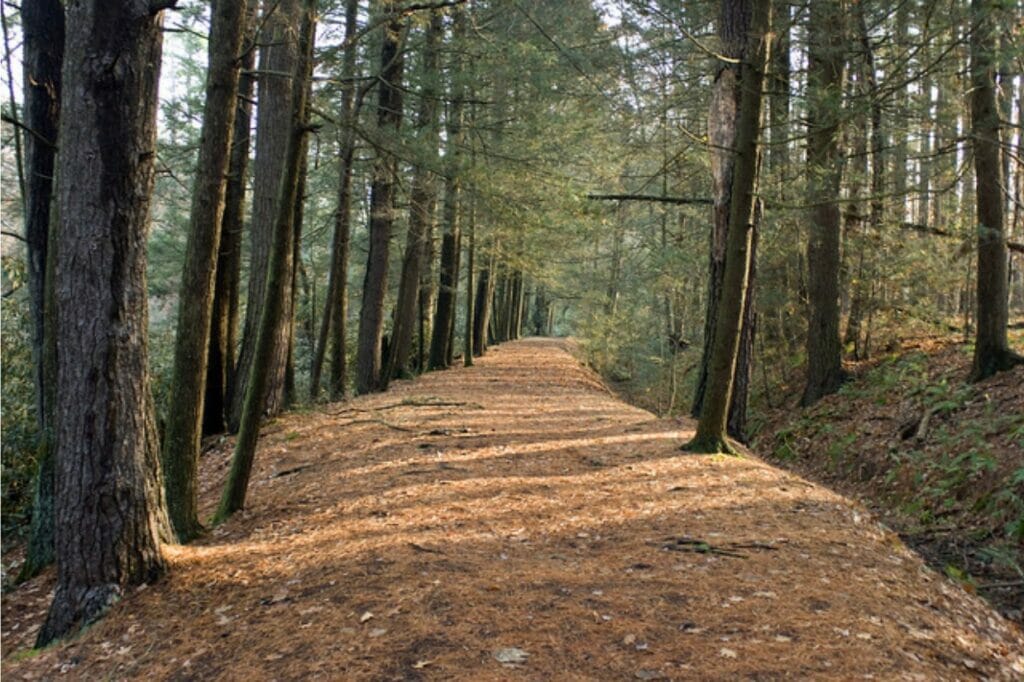
Sprawling across more than 1,100 acres, Caledonia State Park is nestled in the scenic South Mountain area.
This park boasts of a vibrant mix of lush forests and streams, making it a haven for nature lovers. Its terrain is diverse, with some areas being relatively flat, while other spots offer more challenging hikes with steeper inclines.
One of the standout features of the park’s geology is its rocks! The South Mountain region is known for its unique geological formations, and Caledonia State Park is no exception. Among the rocks that make up the land, you can find agates.
Caledonia State Park is conveniently located off Route 30, making it easily accessible by car. But before you visit here, make sure to review Pennsylvania’s most updated collecting guidelines.
Where we found agates in the Caledonia State Park
You can explore the outside boundaries of the Caledonia State Park to find stunning agate samples.
Mt. Holly Springs
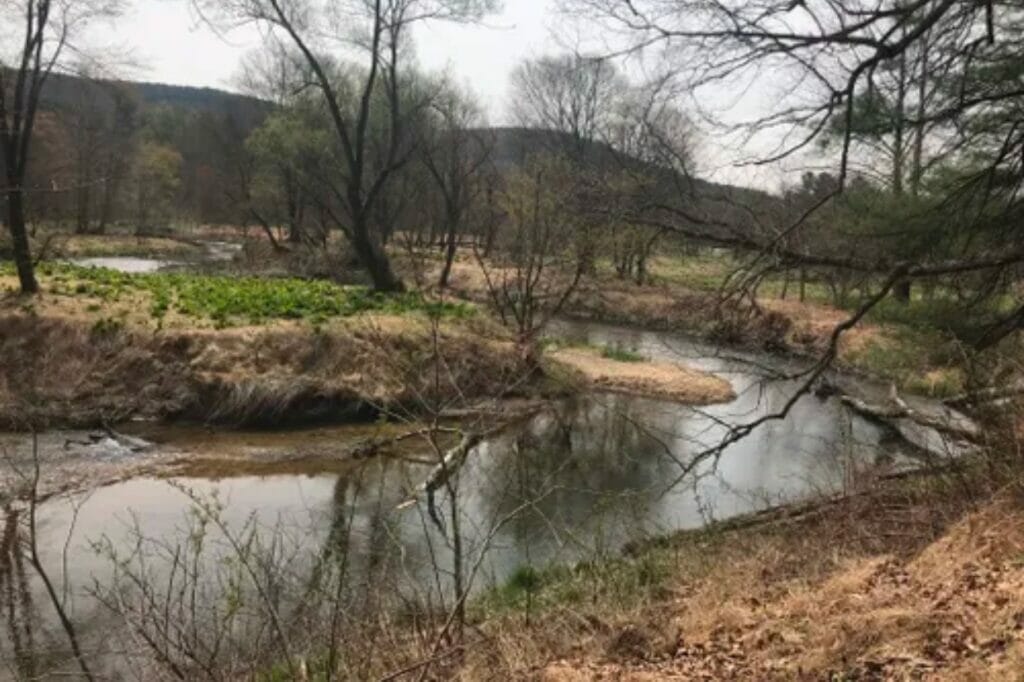
Located in the Cumberland Valley, Mt. Holly Springs is surrounded by picturesque mountains and rolling hills. The terrain in and around this area varies, from gentle slopes perfect for leisurely strolls to more rugged areas. Streams meander through the landscape, adding to the natural charm of the region.
For rock enthusiasts like us, the geology of Mt. Holly Springs is truly a treat! This location has a diverse range of rocks and minerals, among which is the sought-after agate.
Reaching Mt. Holly Springs is a breeze. Conveniently situated near major highways, it’s an easy drive for those coming from different parts of Pennsylvania or neighboring states.
Where we found agates in the Mt. Holly Springs
To find agates in Mt. Holly Springs, search through the south area fields, farms, ditches, banks, and along its fences.
Philadelphia

Philadelphia, often called the “City of Brotherly Love”, sits in the southeastern part of our state. It’s cradled by the Delaware River on the east and the Schuylkill River to the west.
The city itself is relatively flat, with gentle hills and urban landscapes, but venture a bit outside and you’ll find more varied terrains with woodlands, wetlands, and even some hilly areas. The ground beneath it is made up of a mix of sedimentary rocks, including sandstone, limestone, and shale.
Traveling to Philadelphia is super easy. Being a major city, it’s well connected by highways, making it accessible by car. The Philadelphia International Airport welcomes travelers from all over the world, and there’s also an extensive train and bus network for those coming from nearby cities or states.
Where we found agates in Philadelphia
If you want to find agates in Philadelphia, explore the creek beds, rural country fields, and cut banks of this area.
Alsace Township
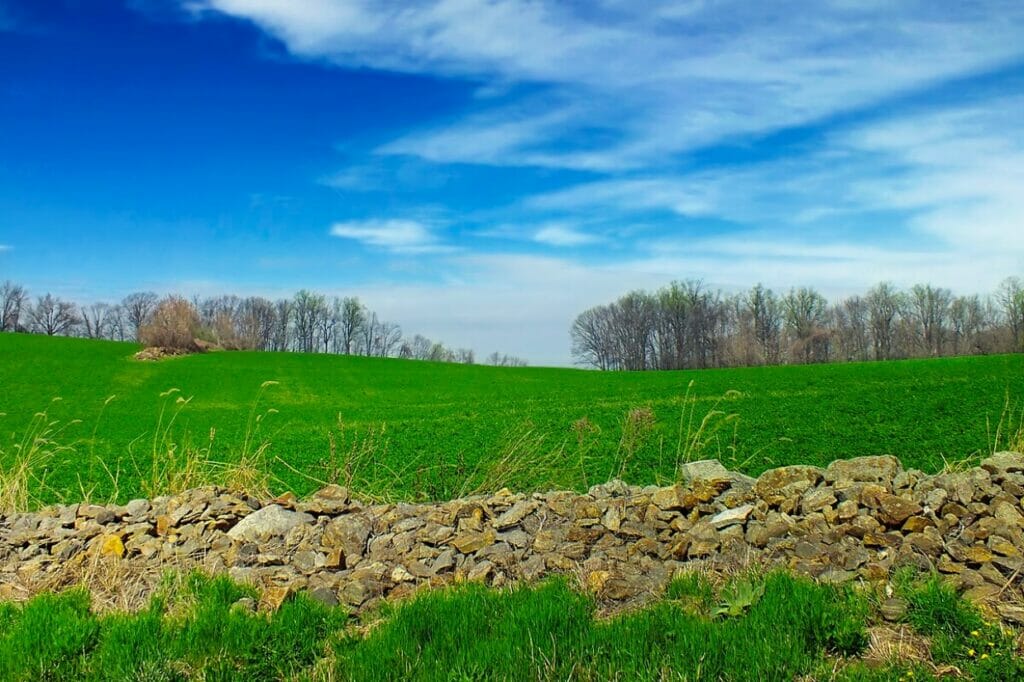
Located in Berks County, Alsace Township has a geography that’s a mix of wooded areas, rolling hills, and open fields. Its terrain isn’t too challenging, with many parts being gentle slopes.
Geologically speaking, this location is fascinating as it’s endowed with a collection of sedimentary rocks, including shale and limestone. Within these rocks, you can find mesmerizing agates.
Despite its richness in natural treasures, Alsace Township is easy to reach. It’s well-connected by roads and is just a short drive from Reading, Pennsylvania’s fifth-largest city.
Where we found agates in Alsace Township
To find agates in Alsace Township, you can search through the area gravels of this location.
Cedar Hill Quarry
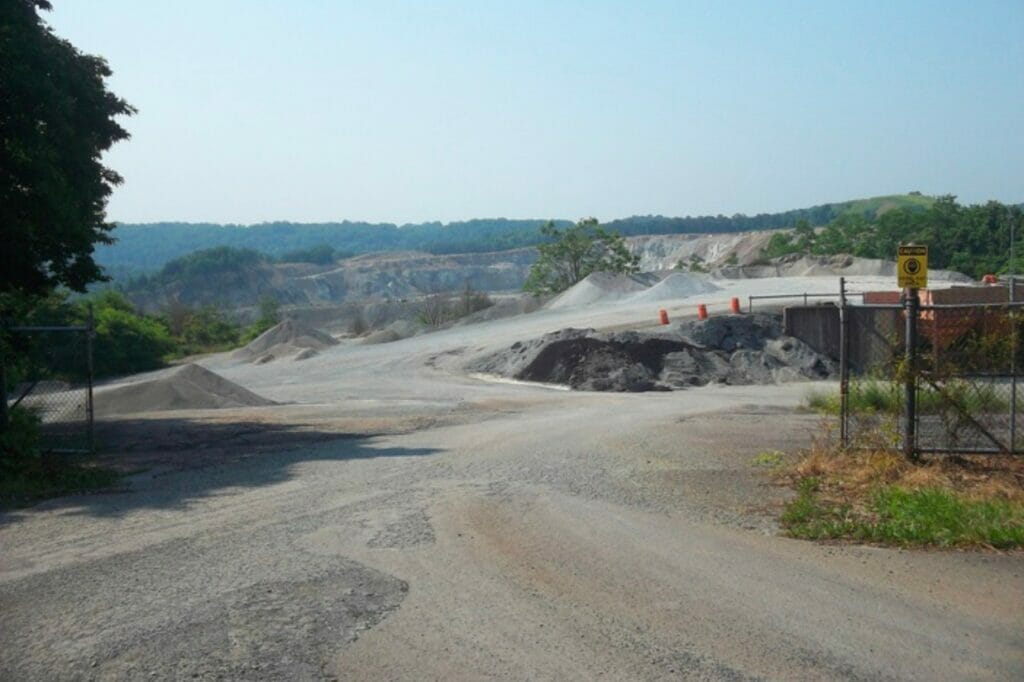
Cedar Hill Quarry is a remarkable spot, presenting a rugged yet enchanting terrain. Its landscape is dominated by exposed rocks, craggy formations, and, of course, the deep excavation sites typical of quarries.
The rock layers here reveal sedimentary deposits from ages gone by. Among these rocks, you’ll find limestone and dolomite, which are commonly associated with quarries in the region. Of course, agates are among the wonders of this place.
Reaching Cedar Hill Quarry is a breeze for those familiar with our local roadways. It’s situated close to Route 272, making it easily accessible by car. Once there, the quarry itself is hard to miss, with its vast excavation sites.
Where we found agates in the Cedar Hill Quarry
To find agates in Cedar Hill Quarry, head just north of the PA-MD state line and explore the general area of this place.
Other Great Places To Find Agates in Pennsylvania
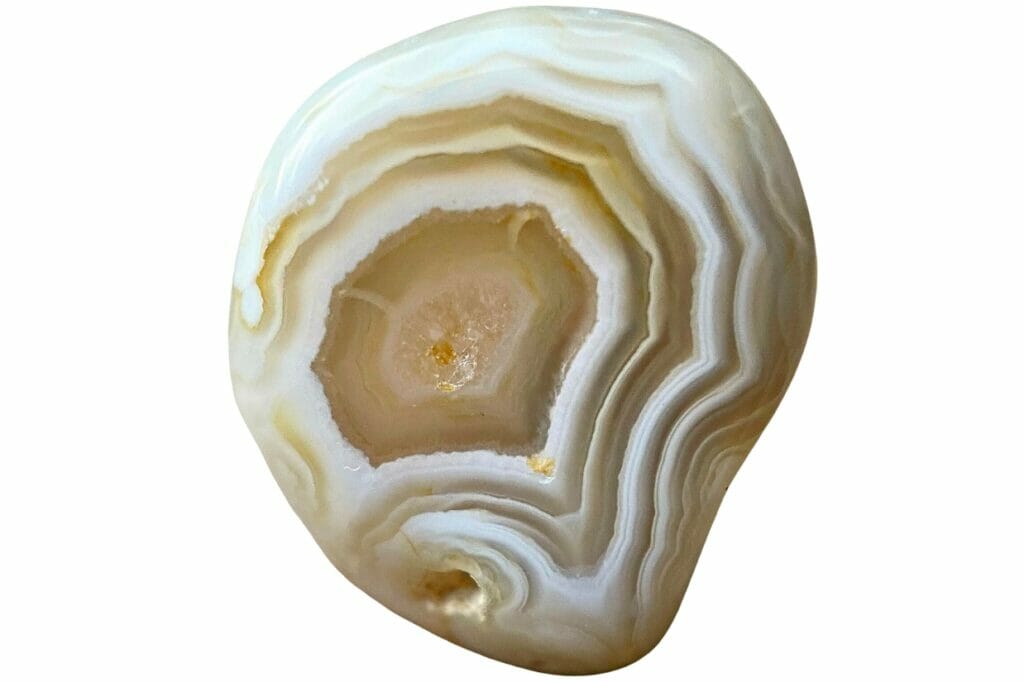
Aside from our top recommendations, there are other agate-bearing sites in Pennsylvania that are worth visiting, such as the ones listed below.
Our recommendations by county
| County | Location |
| Berks | Old Boyertown Iron Mines |
| Bucks | Outcrops in Feasterville |
| Bucks | Gotschall Farm |
| Cumberland | Carlisle Interchange on the Pennsylvania Turnpike |
| Cumberland | Area fields and gravels of Carlisle |
| Dauphin | Weathered material at the Fairview church |
| Lancaster | Rock Springs Run and Rock Springs MD area |
| Montgomery | Area outcrops of Cambrian quartzite in Durham |
| Montgomery | Surrounding fields in Fritztown |
| York | Reesers Haven in Harrisburg |
Additional areas you can find agates
If you’ve decided to go here and start your agate hunting, remember to pay extra attention to the following areas where these gems usually hide:
Quarries
Quarries are places that expose layers and layers of rocks and minerals that have been hidden for ages. Agate forms in cavities within rocks, and when these rocks are excavated in quarries, the chances of finding this gem go up.
Pennsylvania has a number of quarries that often expose ancient sedimentary rocks, which are great hiding spots for agate. So, when you visit a quarry here, not only do you get to see cool rock formations up close, but you also stand a chance of finding some awesome agate pieces.
Streams and Creeks
Streams and creeks are nature’s conveyor belts for gems like agate. Over time, water flows carry away bits of rock and minerals from their original spots. As water moves, it tumbles and polishes these rocks, and that’s where agate can shine!
This gem’s durability means it can withstand the tumbling action better than softer rocks. Pennsylvania is crossed by numerous streams and creeks that can carry agates from their source, depositing them downstream for you to find.
Sediment Deposits
When rocks break down over time, the tiny pieces, or sediments, gather in low spots like valleys or riverbeds. When rocks with agates in their pockets wear away, the tough agate remains.
As water moves, it carries all sorts of sediments, including agates. Over time, these agates get trapped in these deposits, waiting to be uncovered. Pennsylvania is full of these sedimentary areas because of its ancient rivers and water activity.
Common Agate-Hunting Questions
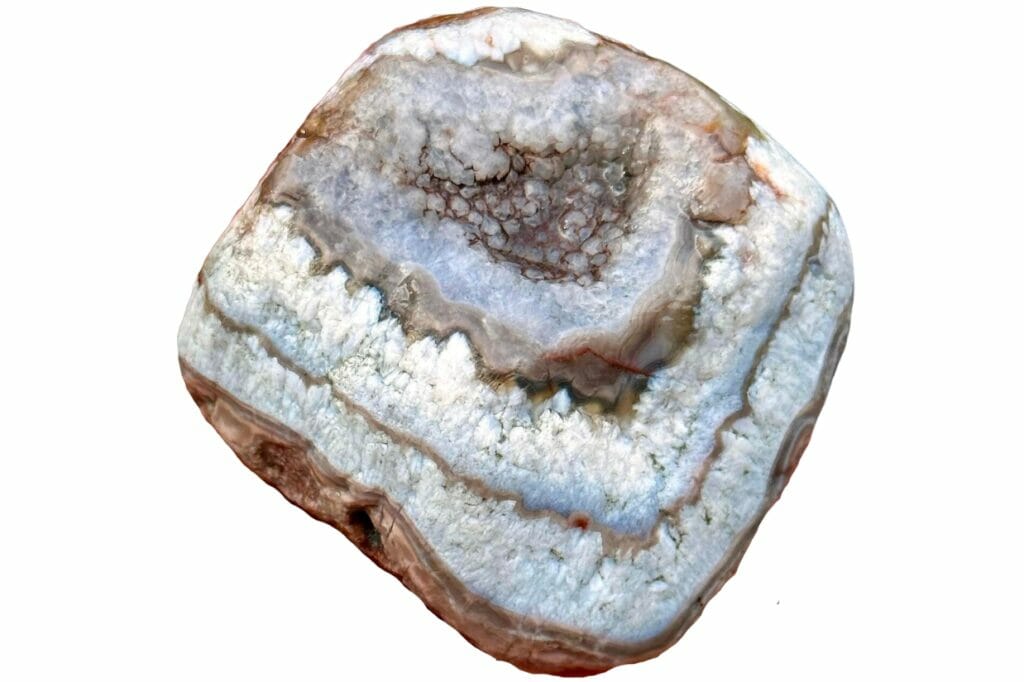
In this section, we’ll answer the most commonly-asked question by those who have come here to find Pennsylvania agates:
Is it illegal to collect agate in Pennsylvania?
As in many places, the legality of collecting agates depends on where you are in Pennsylvania, so it’s essential to know the rules of the specific area you’re in.
On private property, you would need the landowner’s permission to collect. On state lands, such as state parks or forests, collecting rocks, minerals, or any other natural materials is typically prohibited unless explicitly allowed.
If you need more information on the rules of the specific land you’re planning to explore, you can visit the website of the Pennsylvania Department of Environmental Protection (PADEP).
The Best Places To Buy Agates In Pennsylvania

If you want to find agates not just from Pennsylvania, but even those from other places in the world, you can visit our reliable rock and mineral shops here. Below are some of our best ones:
- Appalachian Rock Shop – 6 W Diamond St, Butler, PA 16001
- Back Mountain Jewelry & Rock Shop – 2800 Memorial Hwy Suite1, Dallas, PA 18612
- Bey’s Rock Shop – 615 PA-100, Bechtelsville, PA 19505
- Coolstone Rocks – 454 Plum Sock Rd, Prosperity, PA 15329
- Crystal River Gems – 100 Fifth Ave 7th Floor, Pittsburgh, PA 15222
- Nature’s Design of Mountain Top – 3150 St. Mary’s Road, Mountain Top, PA 18707
- Pocono Rock Shop – 254 Stadden Rd, Tannersville, PA 18372
If you have any recommendations for our list please leave a comment below!

